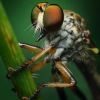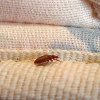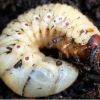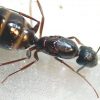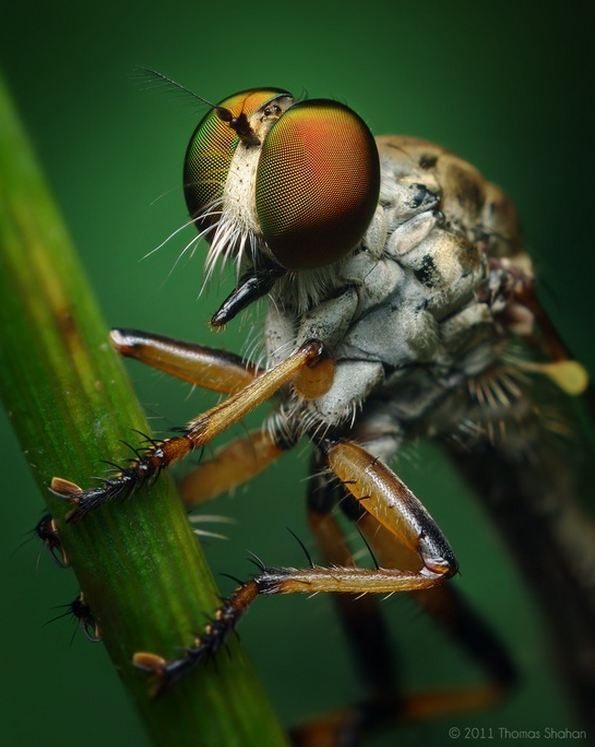
The house fly, popular and harmful house insect
Spring is fast approaching and the insects, slowed down by the cold winter, will come back to life as soon as the temperatures are warmer! And this is the case with the housefly!
“Spring is also the return of the FLIES!”
Why is the fly harmful? How to control domestic flies? How to exterminate flies?
Here are the answers :
FIRST, WHY IS CALLING THE “DOMESTIC” FLY?
The domestic fly (Musca domestica) is the most common species of flies. It is called a domestic, although it is not a domestic animal, but it is an insect that readily enters the houses. This fly is one of the most widely distributed insects in the world.
Among the most common flies in homes and businesses are domestic flies, drosophila (fruit fly), and pollenia (similar to domestic flies, but larger and clumsy).
WHY IS IT HARMFUL?
1. Flies carry diseases!
The fly is a harmful insect that carries with it an infinity of microbes, because it arises anywhere and even on food.
Flies are more precisely insect vectors. They are capable of carrying more than 100 pathogens, such as typhoid, cholera, salmonella, bacillary dysentery, tuberculosis, ophthalmic anthrax, and parasitic worms. Flies in poorer areas and lower levels of hygiene may even carry more pathogens.2. The fly reproduces as a function of temperature
Flies depend on temperatures: generally, the hotter the flies develop. During the winter, most of them survive the larval stage in warm protected areas. In fact, when the cold arrives, the adults look for places to spend the winter. We sometimes find between our windows flies which seem dead to us, but which are in reality, at rest and only wait for the heat to resume their activities.
In spring, the flies emerge from their hiding place and reach the inhabited rooms of the house, where they gather on the windows, attracted by the light.
3. This reproduction is too fast …
Each female fly can lay up to 500 and even up to 1,000 eggs. Newborns will survive by feeding on organic matter (usually dead and in advanced decomposition, such as a corpse, trash or excrement) on which the eggs have been deposited. Fortunately, flies have a shelf life of two weeks to one month only, but can last through optimal environmental conditions.
HOW TO CONTROL DOMESTIC FOULS?# 1. Eliminate potential breeding grounds for flies
The most important step in exterminating flies is to find out where they breed. As they lay a large amount of eggs, flies can quickly become out of control if you can not locate the breeding source. Common sources can be:
Opened bins;
Pet food dishes;
Litter bins with excrement;
Crumbs of food fallen to the ground;
A dead mouse behind the refrigerator;
And even dirty dishes left in the sink with food in it.
When you have discovered potential breeding sites, you must take measures for the extermination of flies. They reproduce on decaying waste, manure and bodies of dead animals. So, you control the potential breeding grounds mentioned above!
# 2. Plug in the potential entries of the flies
To prevent fly infestation, it is also important to ensure that all mosquito nets are properly seated and that any cracks or other openings that could be used as a route into the house are sealed. It is therefore recommended to surround the windows and doors with a sealing strip, caulk the crevices and cracks along the door and window frames and cover the vents with a fine wire mesh.
# 3. In a word, the great means!
In the house, an easy way to get rid of domestic flies is to kill them with a fly squirt. It should be borne in mind, however, that a crushed fly may emit an unpleasant odor, leave spots and attract other insects.
> Traps specially designed for flies are available on the market. Some traps contain a powder that acts like quicksand and retains flies that penetrate inside. In any case, they must be placed in front of the windows towards which the flies converge. There are also very effective light traps.* In case of serious infestation, the use of an insecticide may be justified. Many products containing various concentrations of chemicals are registered for the control of domestic flies and pollinnies. These products must be sprayed on the outside faces of the window and door frames. However, it is important to read the label carefully and follow the directions for use. It should also be noted that some flies have become resistant to the most common insecticides.
You can also consult a pest control specialist to remedy the problem. Exterminating flies permanently is virtually impossible, but with the help of a professional pest control company, you can control and reduce fly populations on your property.
Contact our parasite management experts from A to Z Extermination at the first sign of a fly problem. This is the best way to prevent an infestation!
– Free estimate, discreet service, fast and courteous-
© Written by Audray Bélanger


